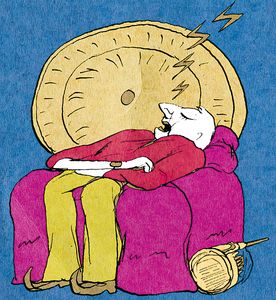It isn’t always good to have an illustrious predecessor. People tend to compare you with him, and find you wanting.
That’s what happened to Henry Addington, who was prime minister of Great Britain at the turn of the 19th century. Coming between two tenures of William Pitt the Younger who is hailed as one of the greatest prime ministers, Addington was found wanting in many respects. This led George Canning to compose the famous doggerel, “Pitt is to Addington as London is to Paddington.” The line, drawing a parallel to the great city and its humble suburb, was the most-quoted line for comparing rulers, till Winston Churchill called the pawns on a chessboard as [Stanley] “Baldwins”, and America’s accidental and unintellectual president Gerald Ford remarked, “I am a Ford, not a Lincoln.”
What happened to Addington happened to the successors of Jawaharlal Nehru, too. Like Pitt, Nehru towered over all his contemporaries and successors in the vastness of his scholarship, sharpness of intellect, syncreticism of beliefs, liberal worldview and grandeur of vision, so much so that he came to be almost deified.
Nehru’s successors institutionalised the deification by naming roads (a practice he expressly forbade), stadiums, colleges, universities, an airport, a seaport, and several other things after him. Yes, they carried it too far.
But the spirit of Nehru, the spirit of eclecticism, is housed in Teen Murti House which, originally built as the Flagstaff House for the commander-in-chief, was Nehru’s official home from 1948 till his death in 1964. It got its name from the nearby square situating the statues of the Jodhpur, Mysore and Hyderabad troopers who served in British expeditionary force that captured Haifa in World War I. The square was renamed Teen Murti Haifa Chowk on the eve of Prime Minister Narendra Modi’s Israel visit last year.
The Roberts Road in front, named after the 19th century general who modernised the Indian Army, was renamed Teen Murti Marg after independence. Another one, Kushak Road, gets its name from the quaint-looking Kushak Mahal, a 14th century hunting lodge built by Feroze Shah Tughlaq and situated in the grounds. A truly eclectic place.
Once a symbol of imperial military might, the Flagstaff House was chosen by Nehru to be the PM House simply to assert the supremacy of the elected civilian leadership over the military in a democracy. He lived a spartan life there, surrounded by books, buddies and birds, and often agonising over the mounting bills for the breakfast eggs and milk which he paid for from his pocket.
The house soon came to symbolise the spirit of a syncretic India, where the leader of the world’s largest and newest democracy argued atomic physics with Homi Bhabha, learnt of cosmic rays from Niels Bohr, exchanged notes on Buddhism with Andre Malraux, debated civilisational history with D.D. Kosambi, and wrote letters to Arnold Toynbee. Yes, Nehru loved to be surrounded by wise men, even as he grappled with the problems of a post-colonial nation, grounded it firmly on the foundation of democracy, steered it onto the path of development, and toiled to build a non-aligned world, almost becoming what Lord Minto said of Pitt, “the Atlas of our reeling globe”.
The house was made into a museum after his death, not just of Nehru, but of the entire independence movement. A research library was appended to it later. Located on vast wooded grounds where peacocks strut around, the Nehru Memorial Museum and Library, today, could well be a scholar’s idea of Paradise. It has the best collection of books on humanities, a rich reprography and manuscript section, the best collection of journals, photos and personal papers of several personages who made 20th century history.
Now Modi wants to build a new building in the complex and house memorials for all prime ministers—past, present and future. Manmohan Singh thinks of the move as vandalism, and has written to Modi to lay off.
So it’s a tie between two Addingtons. Let’s ask a third. Deve Gowdaji, are you listening?
prasannan@theweek.in


